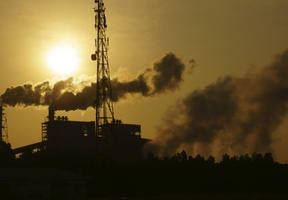Gas Storage
Published on 01.06.20155 min read
As they do with oil, industrialized countries keep a strategic reserve of natural gas to ensure uninterrupted supply in the event of an emergency situation. Storage is also a way of adjusting supply to meet fluctuations in demand.

© THINKSTOCK - Natural gas storage tanks.
Natural gas consumption varies according to the season and heating needs. For example, the French consume eight times more natural gas in winter than in summer. Storage is therefore necessary to align supply with actual demand. Natural gas is mostly comprised of methane, which is produced by the decomposition of previously living organisms.
Where is Natural Gas Stored?
By converting natural gas to liquid, significantly less space is required on the carriers used to transport it. Cooled to -160°C, LNG takes up 600 times less space than raw natural gas. From the moment it arrives at a terminal to the moment it is added to the distribution network, LNG is stored in giant tanks, but this is not a long-term storage method.
One solution is to store gas in natural underground reservoirs, a bit like artificial deposits.
There are three main underground gas storage techniques:
- reservoir: gas is injected into a porous underground rock formation that contains water and is overlaid with an impermeable that acts as a watertight cover.
- Salt cavern: a large, artificial underground cavern is created by pumping fresh water into sedimentary rock composed of rock salt (sodium chloride crystals). Rock salt is naturally impermeable, making it well-suited to gas storage.
- Depleted reservoir: gas is injected into depleted oil and gas fields, which are naturally impermeable.
In 2015, there were approximately 680 underground gas storage (UGS) facilities worldwide, with a total volume equivalent to more than 10% of annual global consumption. Most are located in three markets: North America, Europe and Russia and the main gas-producing countries of Central Asia1.

















